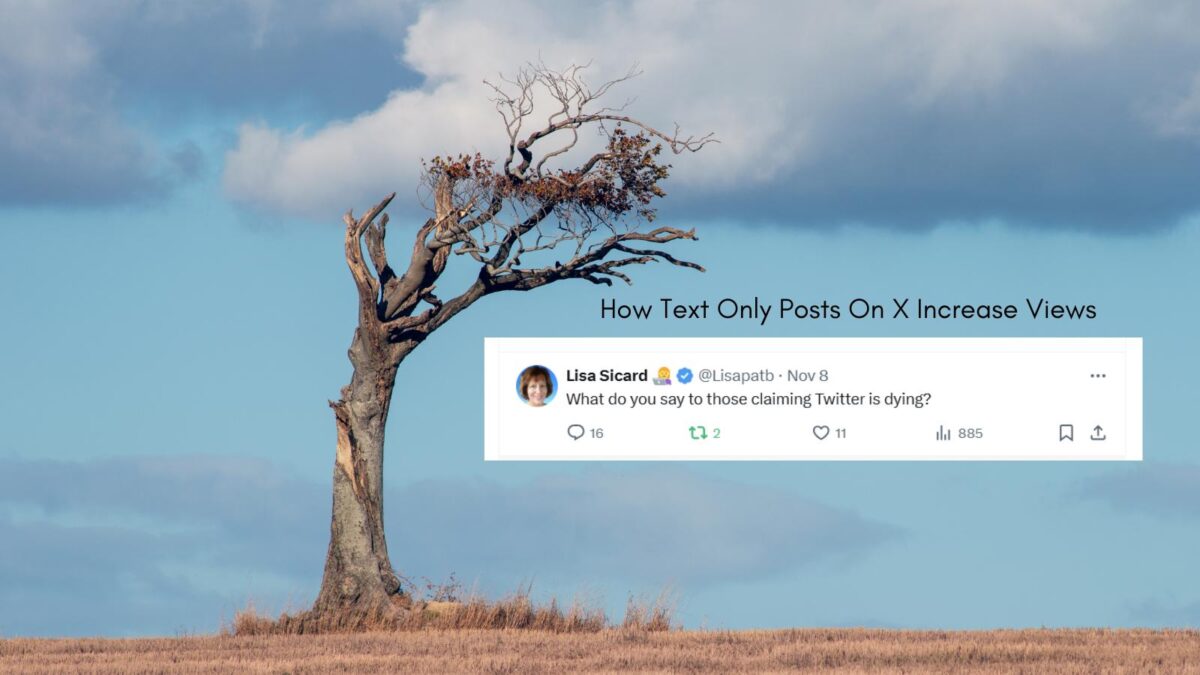Creating a professional social media profile isn’t just for influencers—it’s vital for anyone looking to enhance business opportunities. Your online presence can make or break first impressions. But how do you develop a professional social media profile that stands out today?
It starts with understanding key elements like your bio, consistency, quality content, and strategic networking. Having a polished profile sets you apart and shows your connections that you’re serious about your professional image.
This blog post will cover practical tips to elevate your social media presence through an updated social media bio.
Estimated reading time: 12 minutes
Table of Contents
Key Takeaways
- Creating a professional social media profile enhances business opportunities.
- Key elements include a polished bio, consistency, and quality content.
- Engaging with your audience and showcasing skills.
- Choosing the right platform, like LinkedIn or X Twitter, is essential for effective networking.
- Regularly updating content and maintaining interactions with your network strengthens your professional social media profile.
Understanding the Importance of a Professional Social Media Profile
In today’s social media platforms, having a professional social media profile is crucial. It’s not just about sharing updates, it’s about presenting yourself in the best light.
A professional profile can open doors you never imagined. However, a profile that is not professional may stunt your growth on some social media networks.
Building Your Personal Brand
Think of your social media profile as your digital business card. It’s often the first impression people get of you. Here’s how it contributes to your personal brand and visibility:
- Showcase Your Skills: Your profile is a place to highlight your skills and accomplishments. Share posts about your work or industry insights. Use it to position yourself as an expert.
- Consistency is Key: Make sure your profile picture, bio, and posts align with your personal brand. Consistent branding makes you more memorable and trustworthy.
- Engage With Your Audience: Respond to comments and engage in conversations. This interaction makes you appear more personable and approachable.
By building a strong personal brand, you make it easier for people to recognize your value.
Develop A Professional Social Media Profile for Networking Opportunities
A professional social media profile isn’t just about branding. It’s a powerful tool for networking. Here’s how it can lead to obtaining clients or finding a new job.
- Visibility: A polished profile attracts clients or recruiters. They’re more likely to approach you if your profile is professional and up-to-date.
- Industry Connections: Follow and connect with industry leaders and peers. Comment on their posts and share useful information. This can lead to valuable professional relationships.
- Client Opportunities: Many clients may be looking for your products or services. They may not advertise it but contact you via social media.
In summary:
- A well-developed social media profile boosts your visibility and sets you apart.
- It serves as a networking hub, connecting you with valuable industry contacts.
By maintaining a professional social media profile, you put yourself in a position to grow both your personal brand and your business.
Choosing the Right Platform
Selecting the right platform is the first crucial step when you develop a social media profile. Not all platforms serve the same purpose, and each has unique features that can help you achieve your career goals.
Let’s break down how LinkedIn and X Twitter can be used effectively.
X Twitter and Industry Engagement
X Twitter may not seem like an obvious choice for professional networking, but it’s the most powerful tool for staying updated and engaging with industry experts. Here’s how:
- Follow Industry Leaders: Follow thought leaders and influencers in your field. This allows you to stay updated on industry trends and insights.
- Showcase Expertise: Post about industry news, share insights, and comment on relevant topics. This helps position you as a knowledgeable professional.
- Engage in Conversations: Participate in X Twitter chats and X Spaces and use industry-specific hashtags for chats only. This boosts your visibility and expands your network.
- Promote Your Work: Share links to your projects, articles, or blog posts. This drives traffic to your work and showcases your expertise.
X can be a dynamic platform for real-time engagement and business growth.
LinkedIn: The Professional Standard
LinkedIn is the go-to platform for professionals. It’s designed specifically for networking and career development. If you want to showcase your professional achievements, connect with industry leaders, or find job opportunities, LinkedIn is your best bet. How can you use it effectively?
- Create a Compelling Profile: Ensure your profile picture is professional. Write a headline that states what you do and a summary that highlights your skills and achievements.
- Build Connections: Connect with colleagues, industry leaders, and potential clients. The more connections you have, the wider your professional network.
- Stay Active: Share industry news, write posts, and engage with other people’s content. This keeps your profile active and shows your engagement in your field.
- Join Groups: Participate in LinkedIn groups related to your industry. This is a great way to network and learn from peers.
By leveraging LinkedIn, you can effectively boost your business or career.
Develop A Professional Social Media Profile
Creating a professional social media profile is like crafting your digital business card. Each element, from your profile picture to your bio, plays a key role in how others perceive you.
With the right tips and strategies, you can ensure your profile stands out for all the right reasons.

Choosing a Professional Profile Picture
First impressions matter. Your profile picture is often the first thing people first thing people see when they visit your profile. Here’s how to choose the perfect one:
- Clarity and Quality: Your picture should be clear and high-resolution. Blurry or pixelated images can make you look unprofessional.
- Appropriate Attire: Dress as you would for a job interview. This means wearing professional attire that reflects your industry.
- Neutral Background: Choose a background that’s not too busy. Plain or neutral backgrounds keep the focus on you.
- Friendly Expression: A warm, approachable smile goes a long way in making a positive impression.
Remember, your profile picture is your visual handshake. Make sure it’s a firm, professional one.
Writing an Engaging Bio
Your social media bio is your chance to introduce yourself. It should be concise yet impactful. Here’s how to write an engaging bio:
- Start with a Hook: Grab attention right away. A strong opening statement makes people want to read more.
- Highlight Key Roles: Mention your current job title and past significant roles. This shows your professional journey.
- Include Achievements: List your key accomplishments. Specific achievements like awards or successful projects add credibility.
- Show Personality: While being professional, don’t shy away from adding a personal touch. Mention hobbies or something personal about you. For instance I love weather and puzzles, I mention them on my X personal profile.
My For example, you could say: “Marketing Manager with 10 years of experience. Passionate about innovative campaigns and making a difference through community service.”
Showcasing Skills and Experiences
Highlighting your skills and experiences effectively turns your profile into a showcase of your professional capabilities. Here’s how to do it:
- Make a Skills List: Create a list of your relevant skills. Prioritize those that are most pertinent to your current role or the one you aspire to.
- Detail Experiences: Describe your work experiences in bullet points. Focus on your responsibilities and what you achieved in each role.
- Quantify Achievements: Use numbers whenever possible. Saying you “increased sales by 20%” is more impactful than just saying you “boosted sales.”
- Endorsements and Recommendations: If the platform allows, get endorsements from colleagues or supervisors. Recommendations add an extra layer of credibility.
For instance:
- Managed a team of 12 in delivering marketing campaigns.
- Spearheaded a project that increased client engagement by 30%.
Each section of your professional social media profile should reflect who you are and what you bring to the table, making your profile a powerful tool.
Maintaining Your Professional Social Media Profile
To make a lasting impression and grow your presence online, maintaining your social media profile is crucial. It’s not just about setting up a profile; you need to keep it dynamic and interactive.
Here’s how you can master the art of social media profile’s maintenance.
Regularly Updating Content
Keeping your profile up-to-date shows that you are active and engaged. It’s like keeping your resume current but even more vibrant.
- Share New Achievements: Did you complete a new course? Earn a new certification? Update your profile with these milestones to showcase your continuous development.
- Post Relevant Content: Share articles and blog posts, or reports that are relevant to your field. This keeps your network informed and positions you as a knowledgeable person in your area. If you are not a political candidate or an activist be careful about sharing your political views.
- Refresh Your Bio: Periodically review and update your bio. Add new job roles or remove outdated information to ensure it reflects your current status.
By consistently managing these updates, you’ll keep your profile fresh and engaging, attracting more relevant connections.
Of course, you want to keep your bio picture current. I was not active on my personal Facebook and recently changed that photo as it was over 5 years since I took the photo.
We all age and people want to know WHO you are NOW. Don’t be ashamed of being too young or too old. You always the right age today.

Engaging with Your Network
Interaction is the heartbeat of social media. Having a well-curated profile is great, but you also need to actively engage with your network.
- Comment on Posts: Show interest in what others share by leaving thoughtful comments. This not only builds rapport but also makes you more visible in their network.
- Join Discussions: Participate in relevant discussions or groups. Share your thoughts and insights—they add value and highlight your expertise.
- Congratulate Achievements: When someone in your network shares their success, acknowledge it. A simple “Congrats!” can go a long way in building strong professional relationships.
Being active and engaged helps you build a robust network, which is key to a successful social media presence.
Yes, we are working on a conditioner and hope to have it available next month. Thank you so much for your order and support! 😊 pic.twitter.com/C9JgZbJsUT
— The GOAT Farm (@TheGOATFarmLLC) July 27, 2024
Develop A Professional Social Media Profile: Avoiding Common Mistakes
When developing a social media profile, it’s easy to make errors that can affect how others see you. Understanding these common pitfalls will help you build a professional and polished online presence.
Inappropriate Content
Sharing unprofessional content can be a major setback. Pictures from a wild party, offensive jokes, or controversial opinions might seem harmless to you, but they can leave a bad impression on potential employers or clients.
- Impact on Reputation: Even a single inappropriate post can tarnish your reputation. People often associate you with the content you share. What message do you want to send?
- Long-Lasting Effects: Remember, what’s posted online stays online. Future opportunities might slip away because of a thoughtless post from years ago. We have seen this often with political candidates and CEO’s of major companies.
Tip: Before you share anything, ask yourself if it’s something you’d be comfortable showing to your boss or grandma. If the answer is no, it’s best to keep it off your profile.
Neglecting Privacy Settings
Managing your privacy settings is crucial to protect your personal information. Failing to do so can expose you to identity theft or unwanted attention.
- Guarding Personal Data: Your social media profile often contains personal details like your birthday, address, or current location. This information can be misused if not properly protected.
- Professional Image: By controlling who sees certain parts of your profile, you ensure that only the right people see the right content. Your boss doesn’t need to see every holiday snap you post.
Tip: Regularly review and update your privacy settings. Most social media platforms offer guides on how to adjust these settings, so take a few minutes to explore and make your profile secure.
By avoiding these mistakes, you can develop a social media profile that’s both professional and true to who you are. However, remember there are tools that people use to spy on social media profiles and posts even if you think they are private.
Therefore, always think before you post on any social media platform.
Conclusion: Develop A Professional Social Media Profile Today
Creating a professional social media profile is crucial in today’s connected world. As you build your profile, remember to showcase your unique skills, experiences, and aspirations.
Take charge and make your profile a true reflection of your professional self. Engage with your network, share meaningful content, and always stay updated.
Start today. Enhance your social media presence and open doors to new opportunities.
FAQs for Crafting a Professional Social Media Profile in 2025
Focus on where your industry peers and target audience are most active. LinkedIn is ideal for most professionals, Instagram works well for creatives, and Twitter is great for thought leaders.
Use a high-resolution photo with a simple, professional background. Make sure you’re dressed appropriately for your industry and display a friendly, approachable expression.
Keep it brief and focused. Highlight your current role, key skills, and what sets you apart. Use keywords relevant to your industry to improve searchability.
A custom URL makes your profile easier to share and find. On LinkedIn, go to your profile settings and edit the public profile URL to reflect your name or profession.
Update your profile whenever you change jobs, gain new skills, or complete significant projects. Regularly review and refresh your content every 3-6 months.
Share industry news, insightful articles, and your own thoughts on relevant topics. Avoid overly personal content and maintain a consistent, professional tone.
Engage with posts by commenting, sharing, and liking. Send personalized connection requests and follow-up messages. Participate in industry groups and discussions to increase visibility.
Keywords improve your profile’s visibility in search results. Use terms that are relevant to your industry and reflective of your skills and experiences.
Be factual and specific. Use numbers and results to highlight your impact. Phrases like “increased sales by 20%” or “managed a team of 10” are effective and professional.
Yes, they add credibility. Request recommendations from colleagues and clients. Endorsements can also highlight your key skills and areas of expertise.
- Designing User-Friendly Websites That Drive Results In 2026 - January 21, 2026
- Can You Try mSpy for Free? What Parents Need to Know In 2026 - January 20, 2026
- Offline Marketing: Is It Still a Viable Marketing Strategy Today? - January 20, 2026



